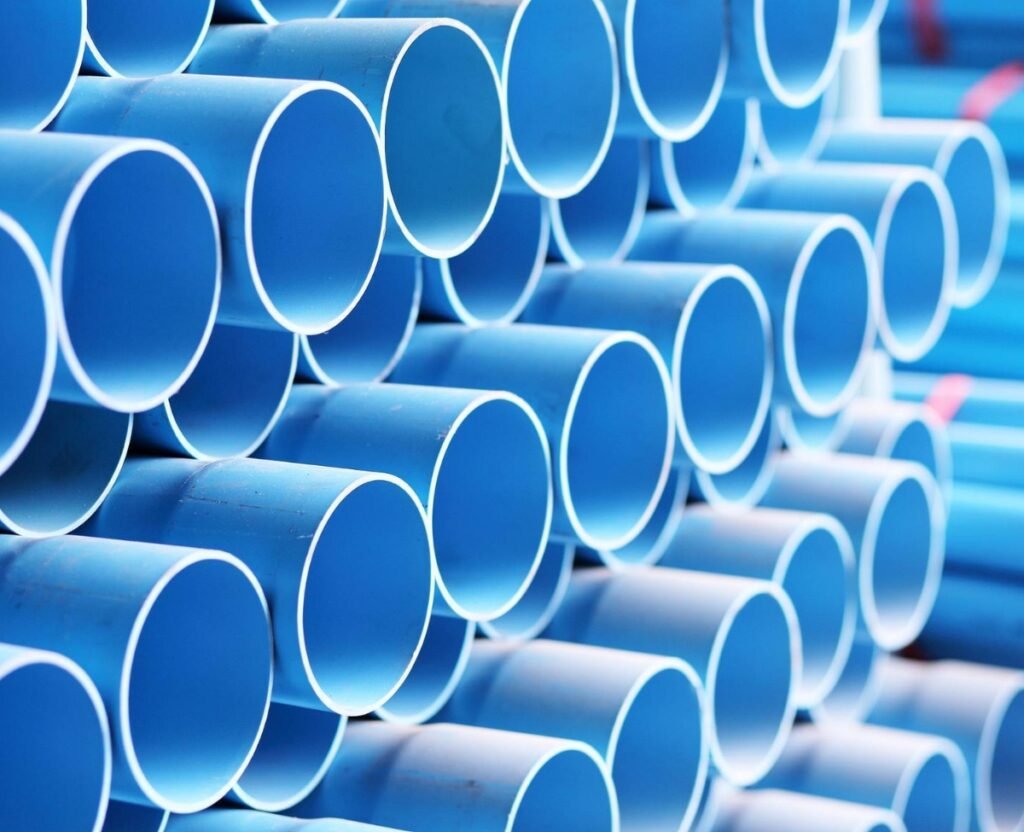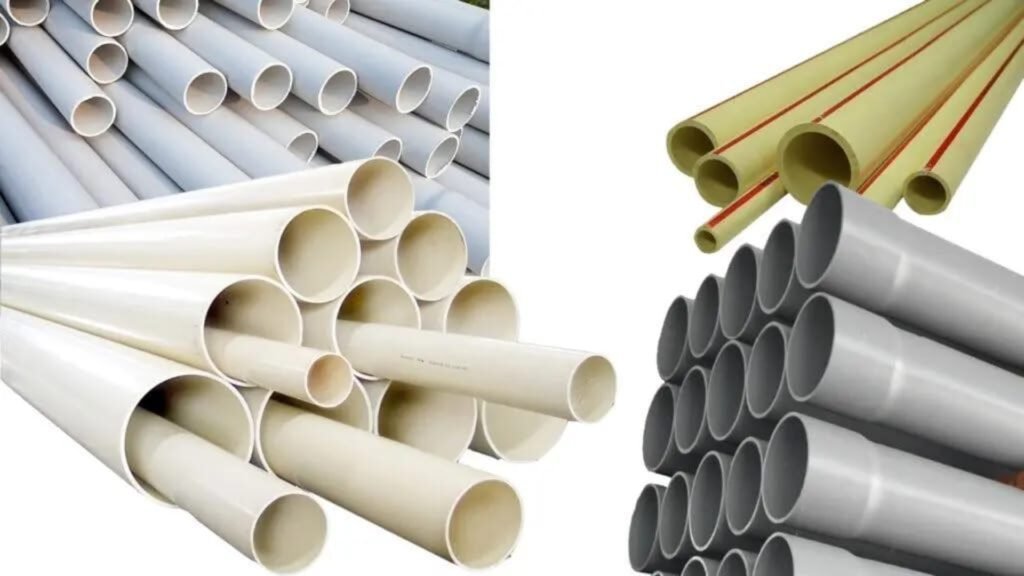Polyvinyl chloride pipe is a widespread plastic. We call it PVC. This substance is extremely adaptable. It can be rigid or flexible. This flexibility provides its usefulness to a variety of products. PVC is robust but not heavy. It is waterproof and it is chemically resistant. The process of PVC production is also cheap. Therefore, this is a contributing factor to its popularity all over the world.
Researchers and analysts point out how PVC has been instrumental in the contemporary infrastructure. Researchers also note the ability to stay long, be cost-effective, and withstand extreme circumstances. Its past usage is also revealed in the fact that it is widely utilized in plumbing, electrical insulation, and irrigation systems. It is also observed by scholars to be safe when transporting potable water and versatile in terms of industrial and medical use.
The role PVC Pipes play in everyday life is hard to overestimate. It finds use in small house plumbing as well as in industrial systems. Thus, with the emergence of sustainability as a priority, the recycling innovations are expected to make PVC more eco-friendly. This material will still be used in the future, providing the world with reliable and efficient solutions to an increasingly globalized world.
The Making of PVC Pipe
Manufacturing of PVC pipes is an obvious process. It is done in regular steps of pipe extrusion. Therefore, the process begins with raw material.
Step 1: Feeding the Extruder
PVC raw material is in the form of either pellets or powder. Thus, this is pumped in a twin-screw extruder. The extruder is a machine of specialization. It also manages the specialty of PVC plastic.
Step 2: Melting and Heating
The PVC material is melted inside the extruder. It also warms up in several areas. Therefore, this provides a stable temperature. Thus, a quality final product requires proper heating.
Step 3: Shaping the Pipe
The molten PVC passes through a die. Therefore, this die renders the material into a pipe shape. Thus, the die predetermines the shape of the pipe and the thickness of its wall.
Step 4: Solidifying and Cooling.
Then the newly created pipe should be cooled. It is also passed through a cooling tank. Water also aids in solidifying the pipe. Therefore, this process secures the ultimate dimensions of the pipe.
Step 5: Cutting to Length
The solid pipe is then cut. It is also cut to the required length using a cutting machine. Therefore, PVC pipes may be manufactured in different lengths. Thus, they adhere to international standards of size.
Production of PVC pipe is difficult. Therefore, the content is very fictitious. Thus, this demands strong twin-screw extruders. Such machines are also able to handle severe operations. This will also guarantee the equipment has a high service life.

The Many Uses of PVC Pipe
There are many uses of PVC pipes. Their uses are in numerous fields. They are an ingredient in infrastructure and building.
Plumbing and Water Systems
PVC is a revolution in plumbing. It substitutes the metal traditional pipes. It transfers clean water and wastewater. PVC is used in household plumbing. It is widely applied in drainage systems. Its durability is also important to the city’s sewer lines. It is lightweight and thus easy to install. It has a long life as it is corrosion-resistant. PVC pipes have a smooth surface that enhances the flow of water. This reduces friction. It can lower pumping costs. Joints that do not leak water. This is a major merit compared to older materials.
Electrical and Construction.
PVC is an excellent thermal resistant. It safeguards electric cables and wires. This helps avoid short-circuiting. It enhances safety in buildings. PVC is also used on window frames and doors. It is a material that is low-maintenance and durable for these applications.
Industrial Applications
PVC is reliable in industries. It carries various types of liquids. The chemical resistance of the material is one of its characteristics. It is appropriate for chemical processing plants. It is also used in the food and beverage industries. PVC does not give flavors or smell. This renders it secure in the transportation of consumables.
Agriculture and Irrigation
Farms enjoy the cheap price of PVC. They provide crops with water in an efficient way. The pipes do not rust. They are resistant to outdoor weather. Greenhouses also use PVC. The substance provides favorable, cozy conditions to plants. It may be silo lining and even fencing.
The Benefits of Choosing PVC
PVC has a number of important advantages. The above advantages make it a popular option among numerous projects.
Durability and Strength
PVC pipes are highly resilient. They are built for longevity. Many can last for over 50 years. They are resistant to decay and erosion. This renders them applicable underground. They are strong and hence reliable in critical systems.
Resistance Properties
Good resistance is a characteristic of PVC. It resists chemicals, corrosion, and abrasion. This is why it is suitable in rough conditions. It can deal with acids, bases, and salts. This is a chemical stability that secures the integrity of the pipe.
Cost-Effectiveness
PVC is an economical choice. The material itself is cheap to develop. It is light, hence minimizing transportation cost. It is also easy and quicker to install. This saves money on labor. PVC does not need much upkeep over a long period of time. This reduces the cost of ownership in the long run as opposed to materials like cast iron.
Health and Safety
PVC has a safe record of use. It is of a high international health and safety standard. This renders it a good selection in sensitive applications. It is registered to hold drinkable water. It is applied in disposable medical equipment in healthcare. PVC is used in almost 40 percent of such devices. Its sterile elastic qualities are used in blood bags and IV drips.
Adaptability and Diversity.
One of the key assets of PVC is its versatility. It may be made as either a rigid or a flexible one. Flexible PVC tubing comes in handy where there is limited space. It is easily able to navigate around obstacles. The material may be prepared in unlimited forms, colors, and sizes as well. This flexibility enables it to appeal to various applications. PVC delivers in terms of medical-grade hoses and also in terms of industrial pipes.
The Future of PVC
PVC is more than just a pipe. It is a material of modern life. It silently subsidizes our homes, cities, and industries. And it is the smart engineering that has made it come out as a finished product out of a raw powder. The material is a resource that is essential because of its inherent strength, cheapness, and resistance. We evidently find it in our walls, in our streets, and even in our hospitals, which attend to us.
The history of PVC is still unfolding. It has now moved to more sustainability. The recycling processes are important in terms of their innovation. The development of a circular economy of PVC will lessen its footprint on the environment. PVC will probably become even smarter as we construct the infrastructure in the future. It will continue to offer safe, reliable, and efficient solutions to an expanding world. The plain plastic pipe is, and will be, a very essential part.

